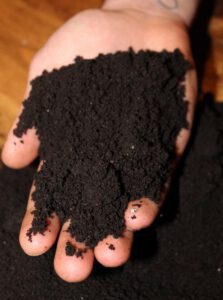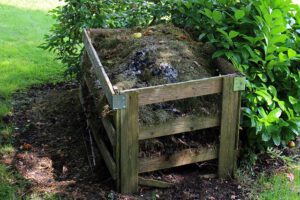Mary Washington Asparagus
Asparagus is a delicious and healthy vegetable that can be enjoyed fresh, canned, or frozen. It’s also easy to grow at home with the help of chappy the gardener’s new guide.
This guide provides everything you need to know about growing Mary Washington asparagus, including when to plant, how to care for your plants, and how to harvest your crop. With clear instructions and helpful tips, you’ll be able to successfully grow asparagus in your own garden.
Mary Washington Menu
Asparagus is one of those vegetables that is so easy to grow, and yet so few people do. It’s a shame, because asparagus is not only delicious, but it’s also incredibly good for you. Asparagus is a great source of vitamins A, C, and K, as well as folate. It’s also a good source of fiber. And best of all, it’s easy to grow! All you need is a little bit of space and some patience.
How To Grow Mary Washington Asparagus
1. Asparagus isn’t picky about soil, but it does like lots of sun. Find a spot in your yard that gets at least six hours of sun per day. Make sure the soil is well-draining and rich in organic matter.
2. Plant your asparagus crowns in the spring. It’s best to plant them after there has been a hard frost, but before the soil warms up too much. In most areas, this will be sometime between late April and early May.
3. Asparagus is a perennial plant, so you can plant it once and enjoy its delicious harvest for years to come. Set your asparagus crowns out at a depth of about 4 inches. Allow about 3 feet between each crown.
4. To keep your new asparagus plants growing, water them frequently and deeply at first.
Once the plants are established, you can water less often but more deeply .
Soil Requirements
When growing Mary Washington asparagus, it is important to start with well-prepared soil. The bed should be at least 8 inches deep and 6 feet wide. Add organic matter to the soil before planting to help with drainage and aeration. The asparagus plants will need full sun and well-drained soil. Fertilize the asparagus bed in early spring with a balanced fertilizer. Apply 1/2 pound of fertilizer per 10 square feet of bed area. Side dress the plants with additional fertilizer during the growing season if needed.
Organic Fertilizing
Organic Fertilizing For Mary Washington Asparagus
As you know, asparagus is a nutrient-dense vegetable that is low in calories and a good source of vitamins A, C, and E, as well as folate. It also contains potassium, fiber, and protein. While it’s possible to grow asparagus without fertilizer, using organic fertilizer will give your plants a boost and help them to grow more vigorously.
There are many different types of organic fertilizer that you can use for your asparagus plants. One option is to use compost or manure. You can also use bone meal, fish emulsion, or kelp meal. If you’re not sure which fertilizer to use, ask at the commet below.
Planting
Mary Washington asparagus is a heirloom variety that has been around for over 100 years. This asparagus is named after George Washington’s wife, and is known for its large, thick spears. The Mary Washington variety is also one of the most cold-hardy asparagus varieties, making it a good choice for gardeners in colder climates.
To plant Mary Washington asparagus, start with crowns that are 1-2 years old. Plant the crowns in early spring, about 6 weeks before your last expected frost date. Choose a sunny spot in your garden with well-drained soil. Dig a trench about 8 inches deep and 18 inches wide. Space the crowns 18 inches apart in the trench, and cover them with 2-3 inches of soil.
To grow Mary Washington asparagus, First, find a suitably sized patch of land. Turn the soil over and add some organic matter. Plant the asparagus crowns 18 inches apart. Keep the bed weeded and free from competition. Fertilize in early spring and late fall. Harvest in the third year and for years to come!
Maintenance
Maintenance Mary Washington Asparagus is a perennial that can be harvested for about three weeks in early spring. After it has been harvested, the plant will produce ferns that can grow up to six feet tall. The ferns will die back in the fall and the cycle will start over again the following spring.
Asparagus is a relatively maintenance-free crop, but there are a few things you should do to ensure a bountiful harvest. First, make sure to choose a sunny spot in your garden for planting. Asparagus prefers well-drained soil, so consider adding some organic matter to your planting area before putting in your crowns.
Once your asparagus plants are established, they don’t need much water or fertilizer. In fact, too much nitrogen can actually result in fewer spears.
Harvesting
Harvesting Mary Washington asparagus is a simple process that can be done in just a few steps. The first step is to wait until the spears are about 6-8 inches tall. Once they reach this height, you will want to cut them at an angle just above the soil line. Be sure to leave about 2 inches of the spear intact so that it can continue to grow.
The next step is to gently pull the spears out of the ground being careful not to damage the roots. Once all of the spears have been harvested, you can then begin the process of cleaning them. You will want to rinse them off with cool water and then trim off any bad or brown parts of the spear.
Once they are trimmed and cleaned, your Mary Washington asparagus is ready to be enjoyed!
How many asparagus spears do you get from one plant?
Asparagus is a perennial plant that can produce spears for up to 15 years, making it a great investment for the vegetable garden. Each year, an asparagus plant will produce more spears than the year before.
In the first year of growth, an asparagus plant will produce around 10-20 Spears. By the third year of growth, an asparagus plant can produce up to 40 Spears. In subsequent years, an asparagus plant will continue to grow and produce more spears each year.
So if you’re looking to add some asparagus to your garden, don’t be afraid to plant a few extra plants. You’ll be glad you did when you’re harvesting those delicious spears every spring!
How much asparagus should I plant for a family of 4?
Assuming you would like tips on growing Mary Washington asparagus for a family of four:
Asparagus is a perennial vegetable that can produce for 20 years or more, making it a great investment for the home gardener. It takes two years for asparagus crowns to mature enough to harvest. Each plant will yield about 1 pound of spears per year.
You should plan on planting about 10-12 asparagus plants per person in your household. So, for a family of four, you should plant 40-48 asparagus crowns. You can either purchase these from a nursery or grow them from seed.
Asparagus prefers full sun and well-drained soil. Amend your planting bed with compost before planting and space the crowns 18 inches apart.
Can you plant asparagus in a raised bed?
Asparagus is a perennial plant that can be grown in a raised bed. The Mary Washington variety is a good choice for home gardens. Asparagus should be planted in early spring, as soon as the soil can be worked. The plants will need full sun and well-drained soil.
To plant asparagus, dig a trench about 6 inches deep and 18 inches wide. Space the plants 18 inches apart in the trench. Add 2 inches of compost to the bottom of the trench and mix it into the soil. Plant the crowns (the tuberous roots) so that they are pointing up and cover them with 2 inches of soil. Water well after planting.
As the plants grow, fill in the trench with more soil until it is level with the surrounding ground. Mulch around the plants to keep down weeds and conserve moisture.
What size raised bed for asparagus?
Assuming you would like tips on what size raised bed to grow asparagus, the following paragraphs offer some helpful suggestions.
For those interested in starting an asparagus bed, it is important to know that asparagus is a perennial vegetable. This means that once you have planted and grown your asparagus, it will come back year after year. With this in mind, it is important to choose a location for your asparagus bed that will allow the plants ample room to spread out and grow.
As far as size goes, a raised bed that is 4 feet wide by 8 feet long is a good size for growing asparagus. This will allow you to plant about 16 crowns of asparagus, which should be enough to provide you with a good harvest each year.
Do you cut back asparagus in the fall?
Fall is the time of year when asparagus plants begin todie back. This is normal and expected, and there’s no need to cut back the plant. The dying process will actually help enrich the soil for future crops. Once the plant has died back completely, you can cut it down to ground level.
How deep do asparagus roots go?
Asparagus is a perennial plant, meaning it lives for more than two years. The Mary Washington asparagus variety can live for up to 15 years, and its roots can grow up to 3 feet deep.
Asparagus plants need deep, well-drained soil in order to thrive. They also benefit from being planted in an area where they will receive full sun. If you are growing asparagus in your garden, make sure to give it plenty of room to spread out. As the roots of the plant grow deep into the ground, they can become crowded and choke out other plants nearby.
If you live in an area with a short growing season, you can start your asparagus plants indoors 6-8 weeks before the last frost date. Transplant them outdoors once the weather has warmed up and all danger of frost has passed.
In conclusion, growing Mary Washington asparagus is a rewarding process that can be enjoyed by all. With a little bit of care and attention, you can grow your own healthy and delicious asparagus.
So what are you waiting for? Get out there and start growing!
Asparagus Menu
Helps Us Grow – Share If You Like






